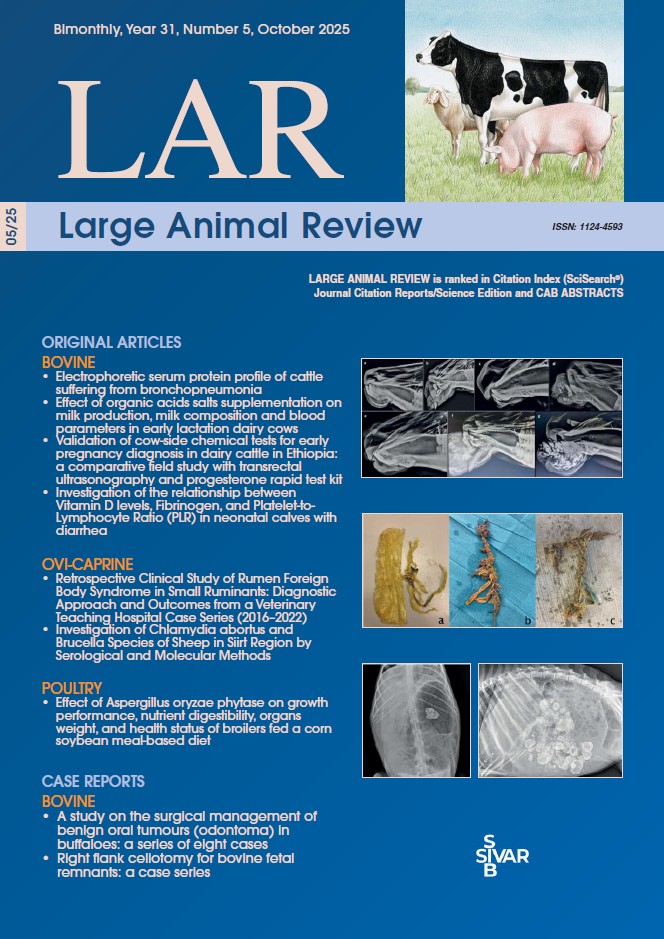Effect of Aspergillus oryzae phytase on growth performance, nutrient digestibility, organs weight, and health status of broilers fed a corn soybean meal-based diet
Abstract
Phytase is a key enzyme that degrades phytate, increases availability of phosphorus and other essential nutrients in poultry by breaking down this antinutritional plant compound. Phytase has been extensively used in poultry diets and can be derived from various microorganisms, including bacteria, fungi, and yeasts. This study specifically explored the effects of varying dietary levels of Aspergillus oryzae (A. oryzae) phytase on body weight (BW), body weight gain (BWG), feed intake (FI), feed conversion ratio (FCR), digestibility, organs weight, and health indicators including footpad lesion score, intestine lesion score, and fecal score in broilers. In total, 1512 one day old broiler chicks (ROSS 308) with average BW of 48 g were randomly allocated to four dietary treatments in a completely randomized design and fed a corn soybean meal-based diet supplemented with 0, 500, 1000, or 1500 FTU/kg of A. oryzae phytase for a period of 32 days. Each treatment consisted of 21 replicates and each replicate contained 18 birds. The data were collected throughout the experimental period, as well as at the end of trial and analyzed using General Linear Model (GLM) procedure in SAS. Results indicated that 1500 FTU/kg phytase supplementation significantly improved BWG during the starter (d 1 to 9), grower (d 10 to 21) and overall (d 1 to 32) period as well as the FI during the starter (d 1 to 9) and grower (d 10 to 21) period of the experiment. However, phytase supplementation at any level did not affect the FCR, mortality, nutrient digestibility, organs weight, or health related indicators such as foodpad or instestinal lesion scores, and fecal score. These findings suggest that A. oryzae phytase supplementation enhances BWG and FI of broilers by mitigating phytate’s antinutritional effects, without altering digestibility and health status, thereby supporting its potential as a sustainable and environmental friendly nutritional strategy in the modern broiler production systems.


